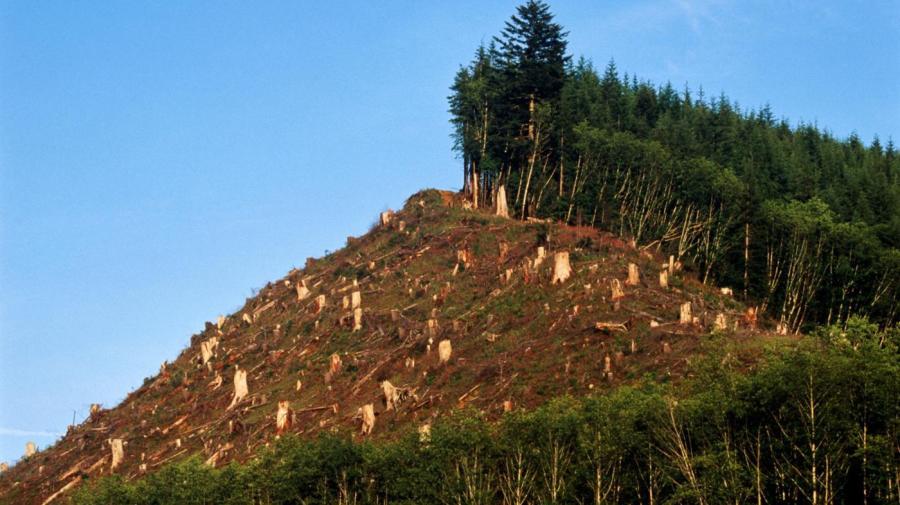What Are Some Disadvantages of Deforestation?

The biggest disadvantages of deforestation include loss of animal habitats, climate change, soil loss and hydrological factors. Deforestation involves the clearing of massive portions of the earth’s forests.
Loss of Animal Habitats
Forests are home to 70 percent of the world’s animals and plant species. As their natural habitats are destroyed, many of these species have difficulty adapting, and some face extinction.
Climate Change
Trees and plants help convert the carbon dioxide in the atmosphere into breathable oxygen. As forests are cut down, the rate of this conversion is slowed, allowing carbon dioxide to build up in the atmosphere. This layer of carbon dioxide traps gases in the atmosphere that also trap radiation from the sun that causes temperatures to rise.
Soil Loss
In addition to the other benefits forests provide, they also decrease the erosion rate of soil, with their roots holding the soil in place. As forests are cleared, loose soil erodes more quickly, and in some mountainous areas this can lead to landslides.
Hydrological Effects
Cutting down trees impacts the water cycle. Trees use their roots to draw groundwater out of the soil and then release that water back into the atmosphere through transpiration. When more and more trees are removed, the climate also becomes drier. Deforested areas have nothing to absorb the water from heavy rains, leading to flash floods.





